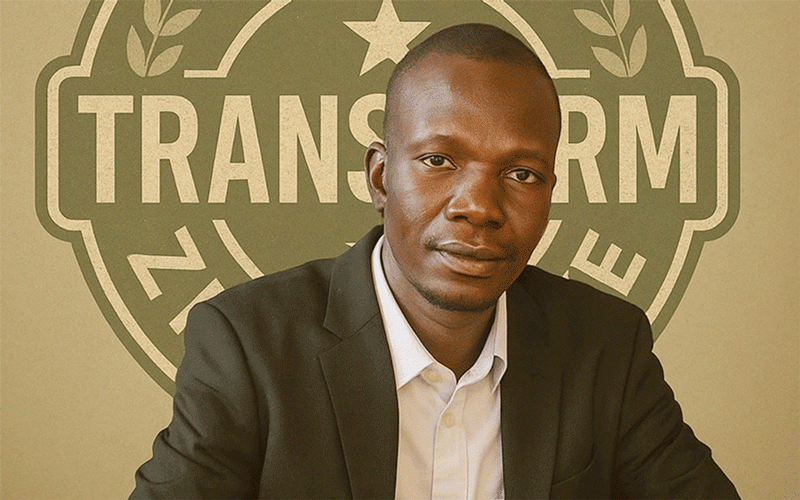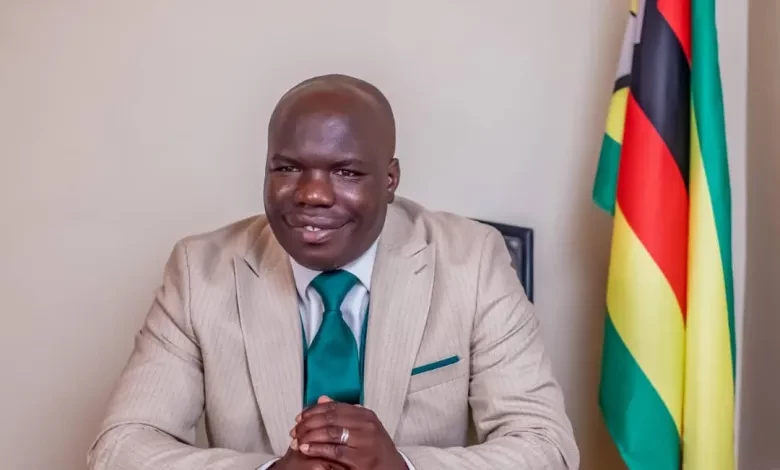
The bush, the woods, the timeless hum.
IThalente Emagudugudwini: a creative endeavour imaginatively curated by Zwelani Ndebele, bringing together rural and peri-urban artists rooted in the landscapes of Figtree and Matobo (commonly spelt Matopo).
These woods may look silent, but they are alive with creativity.
For too long, the artists of these regions have felt marginalised geographically, socially, financially, but through Emagudugudwini a new narrative is being carved: that of art as development, of the rural as creative campus, of the hidden as visible.
In the peri-rural settlement of Figtree, and deeper in the granite hills and valleys of Matobo, there are pockets of talent that yearn for space, for voice, for recognition.
Along the Plumtree road, passing through these areas, one senses the movement of people, the freight of trucks, the slow dance of travellers.
But in this the reality of this, beneath that traffic lies the hum of quieter lives: singers, storytellers, potters, painters, folk-musicians.
Zwelani Ndebele’s work is to bring those quiet lives into a connected cadence.
- Feature: ‘Everyone is an artist’: Zim’s My Beautiful Home contest
- Neighbour ‘traumatises’ woman’s minor children
- Advertising: radio’s all time golden goose
- Bumper line up for PPC Matopos marathon
Keep Reading
Under his curatorship, Emagudugudwini operates as a network: artists meet in woodland clearings, at village halls, on verandas, exchanging ideas, rehearsing, painting murals, telling stories of their forebears.
These are not artists who simply travel into the city and leave; they are anchored in the soil of Matobo and Figtree, using that anchoring as strength.
One of the key partnerships is with the Indebo Trust where the artists are exploring the possibility of “creative + development” rather than just “art for art’s sake”.
The idea art that contributes to local tourism, to local livelihoods, to the cultural aesthetics.
At the heart of Emagudugudwini’s story stands a figure of quiet myth known as Nkiwane an ethno-folk guitarist, a storyteller whose fingers have strummed the wood of acoustic guitars as if coaxing a voice from the hills.
His repertoire draws on local histories, on the Ndebele oral tradition, on songs for the soil and the rock and the ancestors.
“If the stone remembers the footsteps of our forebears, then my strings are echoes of those footsteps,” Nkiwane says.
The quote speaks to how he sees his craft: not merely entertainment, but a transmission of culture one that risks being lost because of lack of exposure.
His voice carries stories of Matobo’s granite hills, of the tremors of change, of communities that once sang beneath the ambience of nature and now commute to the city.
Nkiwane’s metaphor positions the landscape as memory and his instrument as channel.
The “stone remembers” conjures the deep time of Matobo, the rocks and ancient shrines.
The “strings are echoes” suggests that his music is a resonance, a passing-on of something older than the modern moment.
And the threat “lack of exposure” is real: rural artists like him seldom find the platforms, marketing, networks, audiences to turn talent into livelihood.
Emagudugudwini, then, is the connecting hinge.
Emagudugudwini as an oasis in the desert.
There is an apt image here: the terrain of these rural spaces can feel like a desert metaphorically speaking a place of distance, of invisibility, of drought of resources, of attention.
But Emagudugudwini is trying to create an oasis in that desert which is a site of refreshment, of creative life, of gathering.
Artists who felt “lost in the woods” are now forming a clearing one where the traffic of the outside (Plumtree road, visitors, tourists) can pause, and where creativity becomes destination.
In this metaphor, the desert is both the literal rural marginalisation and the figurative dryness of opportunity.
The oasis is the cluster of artist-spaces, the collaboration, the possibility of tourism and development.
The “woods” themselves house the project: woods of creativity, woods of artistic habitation.
The movement is from marginal to centre; from unseen to seen.
There is huge potential for boosting local tourism along the Plumtree corridor, leveraging the creative energy of Emagudugudwini.
Thee can help other rural communities in Zimbabwe and the globe.
They are also based from vicarious experiences I had in the area.
The welcoming nature and Ubuntu which is requisite.
Rural artist chalets and lodges where they can establish small boutique chalets, built and decorated by local artists, nestled in the hills around Figtree / Matobo.
Guests could book stays, experience the woods, attend informal performances by Nkiwane and company and actually view art in-situ.
The accommodation becomes part of the story.
Artist studios plus galleries along Plumtree road or simple sign-posting off the main road could direct visitors to open-studio experiences: painters, potters, wood-carvers.
Visitors browse, chat, buyand this gives rural artists access to passing tourists or commuters.
Seasonal “Emagudugudwini Festival”: Imagine an annual (or bi-annual) festival of folk music, visual arts, storytelling, dance under the trees.
With headline acts (maybe Nkiwane), workshops, open-air concerts, local food markets. It would draw both domestic tourists (from Bulawayo, Harare) and In Matobo, with its hills and ancient rocks, performance pieces (music/storytelling) could be placed in dramatic settings like I a kraal or big homestead or mountainside.
Combine hiking and art is my reccomeded idea.
One day tourists can cross a slope to a clearing where Nkiwane plays as the sun sets.
In reality this was what I actually enjoyed to a from for some good kilometers.
Schools can bring students for arts-outdoor retreats, workshops led by rural artists.
This creates educational tourism plus local revenue.
Emagudugudwini is ambitious but constrained. Rural infrastructure (roads, power, accommodation) is weak; marketing networks are underdeveloped; artists lack access to resources and funding.
Marginalised rural artists are often invisible in the national narrative.
The region of Matabeleland in particular bears a legacy of cultural alienation.
As one article pointed out: “the marginalisation of Matabeleland … has rendered Zimbabwe so fragile a nation that even a street mural can expose its disunity.”
When artists from Figtree and Matobo step forward through Emagudugudwini, this is about more than art: it is about inclusion, about rural creativity claiming a place in the national and global cultural economy.
Moreover, by linking creativity with tourism and local development, the project has the potential to transform livelihoods.
Artists become entrepreneurs; villages become destinations; the woods become creative landscapes rather than places of exodus.
The “oasis” metaphor holds: in a space that earlier seemed arid of opportunity, the project cultivates a spring of possibility.
Ultimately, what the woods around Figtree and Matobo offer is a rare mix: landscape, culture, talent, unspoilt context, and passing traffic on Plumtree road.
Emagudugudwini taps into that mix.
It says that rural is not peripheral, rural is frontier not of deprivation alone, but of creative possibility.
If the stones of Matobo could speak, they would tell tales of rain-shrines, of ancient harvests, of granite and sky.
The desert was never the end of the story. The oasis is being formed. And beneath the trees, beside the road, art is waking and living.
Marginalised rural artists are often invisible in the national narrative.
The region of Matabeleland, in particular, bears a legacy of cultural alienation.
When artists from Figtree and Matobo step forward through Emagudugudwini, this is about more than art: it is about inclusion, about rural creativity claiming a place in the national and global cultural economy. By linking creativity with tourism and local development, the project has the potential to transform livelihoods.
Artists become entrepreneurs; villages become destinations; the woods become creative landscapes rather than places of exodus.
For Emagudugudwini to succeed, three things need to happen: visibility building a recognizable brand through social media, roadside signage, and festivals; partnerships with tourism and leisure sectors to integrate artist spaces into offerings; and sustainable funding—beyond grants, exploring revenue through lodging, workshops, crafts, and cultural tourism packages.
Ultimately, what the woods around Figtree and Matobo offer is a rare mix: landscape, culture, talent, unspoilt context, and passing traffic on Plumtree road. Emagudugudwini taps into that mix. It says: rural is not peripheral rural is frontier not of deprivation alone, but of creative possibility.
If the stones of Matobo could speak, they would tell tales of rain-shrines, of ancient harvests, of granite and sky.
Nkiwane and the network of artists say: listen.
Through guitars and paintings and story-songs we are telling our version of this land.
And if you pause at our lodges, walk our trails, attend our festival, you will be part of the oasis.
The desert was never the end of the story. The oasis is being formed. And beneath the trees, beside the road, art is the pulse.
There is an apt image here: the terrain of these rural spaces can feel like a desert metaphorically speaking a place of distance, of invisibility, of drought (of resources, of attention).
But Emagudugudwini is trying to create an oasis in that desert: a site of refreshment, of creative life, of gathering.
Artists who felt “lost in the woods” are now forming a clearing—one where the traffic of the outside (Plumtree road, visitors, tourists) can pause, and where creativity becomes destination.
In this metaphor, the desert is both the literal rural marginalisation and the figurative dryness of opportunity.
The oasis is the cluster of artist-spaces, the collaboration, the possibility of tourism and development.
The “woods” themselves house the project: woods of creativity, woods of artistic habitation.
The movement is from marginal to centre; from unseen to seen.
There is huge potential for boosting local tourism along the Plumtree corridor, leveraging the creative energy of Emagudugudwini.
One possible idea is to establish small boutique chalets built and decorated by local artists, nestled in the hills around Figtree and Matobo.
Guests could book stays, experience the woods, attend informal performances by Nkiwane and company, and view art in-situ.
The accommodation itself becomes part of the story.
Simple sign-posting off the main road could direct visitors to open-studio experiences: painters, potters, wood-carvers.
Visitors browse, chat, and buy, giving rural artists access to passing tourists.
This was my experience in the practicum this week and it can be applied in many rural communities and enhance the sustainability of livelihoods.
- Raymond Millagre Langa is the Founder of Indebo Edutainment Trust, an abstractionist, and an independent researcher.











